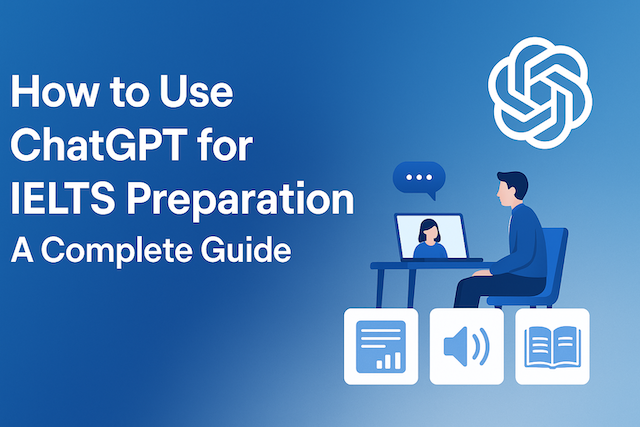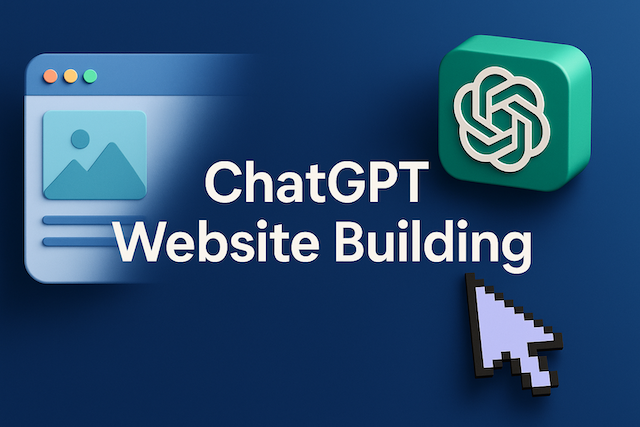Preschool and Daycare Options for Young Children in Cebu

Contents
- Preschool and Daycare Options for Young Children in Cebu
- Why Early Childhood Education Matters
- Types of Preschools and Daycare in Cebu
- What to Look for in a Preschool or Daycare
- Cost of Preschool and Daycare in Cebu
- Recommended Preschools and Daycare Centers in Cebu
- Enrollment Process
- Tips for Parents New to Cebu
- Cultural Considerations
- Language Transition: What If Your Child Doesn’t Speak English?
- Balancing Education and Play
- Final Thoughts: What’s the Best Preschool for Your Child?
- Frequently Asked Questions
- Do I need a visa for my child to attend preschool in Cebu?
- How much does preschool or daycare cost in Cebu?
- Are there English-speaking preschools in Cebu?
- What’s the difference between a daycare and a preschool in Cebu?
- Can I enroll my child for just a few days a week?
- Are Cebu’s daycares and preschools safe?
- What if my child doesn’t speak English or Filipino?
- Do preschools in Cebu provide meals and snacks?
- What curriculum do preschools in Cebu follow?
- When does the school year start and end?
- Are there any religious preschools in Cebu?
- What’s the usual teacher-to-student ratio?
- Do schools accept non-toilet trained toddlers?
- Can I change schools mid-year if needed?
- How soon should I apply for enrollment?
Preschool and Daycare Options for Young Children in Cebu
Cebu is one of the most popular destinations in the Philippines for expat families and long-term residents, thanks to its international schools, affordable cost of living, and tropical lifestyle. For families with young children, one of the top priorities is finding reliable, nurturing, and developmentally appropriate preschool or daycare options. Fortunately, Cebu offers a diverse range of early childhood education centers catering to different philosophies, languages, budgets, and needs.
This guide explores the most recommended preschools and daycare centers in Cebu, what to look for when choosing one, typical costs, curriculum types, and tips for parents navigating the enrollment process.
Why Early Childhood Education Matters
The first five years of a child’s life are crucial for emotional, social, and cognitive development. Whether you’re looking for a play-based daycare, a bilingual preschool, or a Montessori program, the environment and teaching approach can significantly influence how your child learns, grows, and interacts with the world.
In Cebu, many early childhood institutions recognize the importance of holistic development, offering programs that combine structured learning with play, emotional support, and physical development.
Types of Preschools and Daycare in Cebu
1. Traditional Preschools
Traditional preschools in Cebu follow a more structured curriculum often aligned with the Philippine Department of Education’s Early Childhood Care and Development (ECCD) framework. These programs include subjects such as reading readiness, basic math, music, arts, and physical education.
Examples:
-
Children’s Paradise Montessori School (Banilad) – Offers traditional academic programs with play components and values formation.
-
B.R.I.G.H.T. Academy Preschool (Banilad) – Well-known for structured learning and English immersion.
2. Montessori Preschools
Montessori education emphasizes self-directed activity, hands-on learning, and collaborative play. Cebu is home to several Montessori-inspired schools that cater to both local and international families.
Examples:
-
Maria Montessori International School (Gorordo & Talamban) – One of Cebu’s longest-running Montessori schools offering programs from preschool to high school.
-
Children’s Paradise Montessori School (Banilad) – Blends Montessori philosophy with Filipino values.
3. Bilingual or International Preschools
Some schools offer bilingual programs, primarily English and Filipino, but others may offer Japanese, Korean, or Chinese immersion depending on the community served. These schools often follow international standards or use a blend of local and foreign teaching philosophies.
Examples:
-
Kinderland Preschool (Lahug) – Singapore-based preschool with a curriculum focused on English and Mandarin.
-
PAREF Southcrest (Banawa) – All-English instruction with a strong emphasis on character formation.
4. Daycare and Child-Minding Services
Daycare centers in Cebu are more flexible and may cater to working parents who need part-time or full-day care. These centers focus more on play, socialization, meals, and safety rather than structured academics.
Examples:
-
Tumble Tots Philippines (Banilad Town Center) – Offers play-based learning and child-care for toddlers.
-
Little Green House (near IT Park) – Bilingual environment with flexible drop-in daycare options.
What to Look for in a Preschool or Daycare
1. Curriculum and Teaching Approach
Ask whether the school uses Montessori, play-based, traditional, Reggio Emilia, or a hybrid approach. Some parents prefer structured academics; others prioritize social and emotional learning.
2. Teacher Credentials
Well-trained teachers should have degrees or certifications in Early Childhood Education. Inquire about staff-to-child ratios and whether assistant teachers are provided.
3. Safety and Facilities
Check for gated entry, CCTVs, clean and child-proofed classrooms, shaded outdoor spaces, and age-appropriate furniture and toys.
4. Communication and Parent Involvement
A good preschool will offer regular progress reports, parent-teacher conferences, and updates through email, apps, or paper logs.
5. Language of Instruction
Most preschools in Cebu use English, but it’s important to clarify if you want bilingual instruction, especially if your child is not fluent in English or Filipino.
Cost of Preschool and Daycare in Cebu
Tuition and fees vary widely based on location, curriculum, facilities, and reputation.
| Type | Monthly Fee (PHP) | Notes |
|---|---|---|
| Local Daycare (Part-Time) | 3,000 – 6,000 | 2–3 hours/day |
| Local Daycare (Full-Time) | 6,000 – 12,000 | Meals may be included |
| Private Preschool | 12,000 – 30,000 | Academic program, books, uniforms |
| International Preschool | 30,000 – 60,000+ | Singaporean/Western curriculum |
Additional costs may include:
-
Registration fees
-
School uniforms
-
Books and materials
-
Field trips
-
Meal plans or snacks
Recommended Preschools and Daycare Centers in Cebu
Here is a curated list of reputable preschools and child care centers in Cebu:
1. Children’s Paradise Montessori School (Banilad)
-
Philosophy: Montessori with values-based learning
-
Age Group: 1.5 – 6 years
-
Facilities: Outdoor garden, sensory room, security
-
Languages: English, Filipino
2. Kinderland Preschool (Lahug)
-
Philosophy: Singaporean curriculum
-
Age Group: 18 months – 6 years
-
Special Features: Bilingual in English and Mandarin, music and movement
3. Tumble Tots Philippines (Banilad Town Center)
-
Philosophy: UK play-based learning
-
Programs: Playgroup, nursery, kindergarten
-
Notable: Parent & child interactive classes, ideal for toddlers
4. Woodridge International School (Mandaue)
-
Program: Nursery and kindergarten under an international curriculum
-
Facilities: Air-conditioned classrooms, playground, security
5. Cambridge Child Development Center (Cebu IT Park)
-
Approach: Multiple Intelligences framework
-
Target Group: Toddlers to preparatory levels
-
USP: Located in a secure corporate zone, great for working parents
6. Little Lamb’s Learning Center (Mandaue)
-
Philosophy: Christian-based early learning
-
Age Group: 2 – 6 years
-
Budget-friendly: More accessible to local and budget-conscious families
Enrollment Process
Step 1: Research and Schedule a Visit
Start by identifying 3–5 schools that meet your criteria. Most schools are happy to arrange an in-person or virtual tour.
Step 2: Submit Application Form
Most schools will require:
-
Birth certificate
-
Medical clearance
-
Passport or visa (for foreign children)
-
Previous school records (if applicable)
Step 3: Interview or Assessment
Some preschools conduct simple readiness assessments, especially for kids over 3 years old.
Step 4: Secure a Slot
Pay registration or reservation fees early—especially in competitive schools—as slots are limited.
Tips for Parents New to Cebu
1. Plan Transportation
Traffic in Cebu can be unpredictable. Choose a school close to your home or workplace, or one that offers shuttle services.
2. Prepare for Adjustment
Children may need a few weeks to adjust to new environments, languages, or cultural norms. Consider a short transition phase like half-day attendance at first.
3. Pack Essentials
Even full-day programs often expect parents to provide water bottles, extra clothes, diapers (for toddlers), and snacks, unless otherwise noted.
4. Stay Connected
Join parenting Facebook groups such as “Cebu Expat Parents” or “Cebu Mom Community” to get advice, reviews, and updates about schools.
Cultural Considerations
In Filipino culture, preschools often incorporate respect, community awareness, and faith-based values. Children are taught to use “po” and “opo” (respectful words), and schools may celebrate local holidays or include prayers in the daily routine.
International families should clarify how much cultural or religious content is integrated into the curriculum, especially if they have specific preferences.
Language Transition: What If Your Child Doesn’t Speak English?
Most preschools welcome children with limited English fluency. Teachers are generally patient and trained to guide young learners using visuals, repetition, and gestures. Within 2–3 months, many children pick up enough English to understand routines and express needs.
However, if you prefer a bilingual or mother-tongue-friendly environment (such as Japanese or Korean), Cebu has small community-run schools and weekend programs for expat children to retain their heritage language.
Balancing Education and Play
One of the strengths of Cebu-based preschools is the emphasis on balance. While some international systems are highly academic, many local programs prioritize play, music, dance, and social interaction. Outdoor play is also common due to the tropical climate, though some schools have indoor gym areas to avoid extreme heat.
Look for schools that give children both structured guidance and room for self-expression.
Final Thoughts: What’s the Best Preschool for Your Child?
There’s no one-size-fits-all answer. The best preschool or daycare for your child depends on:
-
Your family’s schedule and commute
-
Your child’s personality and learning style
-
Budget and long-term educational goals
-
Language preferences
Cebu is fortunate to have a rich variety of choices, from budget-friendly daycare centers to premium international preschools with advanced curricula. By doing your research, visiting the campuses, and talking to other parents, you can confidently choose a nurturing and engaging environment for your child’s early years.
Frequently Asked Questions
Do I need a visa for my child to attend preschool in Cebu?
Yes. If your child is not a Filipino citizen and will stay in the Philippines for over 59 days, you will need to secure a Special Study Permit (SSP) from the Bureau of Immigration. Many preschools in Cebu can assist with the application process. Note that the SSP is typically valid for six months and may be renewed. Requirements include a photocopy of the child’s passport, a letter of endorsement from the school, and a notarized affidavit of support from the parent.
How much does preschool or daycare cost in Cebu?
The cost can vary significantly depending on the school’s curriculum, location, and reputation. Local daycare centers often charge between PHP 3,000 to 12,000 per month. Private preschools may cost between PHP 12,000 to 30,000, while international or Montessori-based schools can go from PHP 30,000 to 60,000 per month. Other costs to consider include enrollment fees, uniforms, books, meal plans, and activity charges.
Are there English-speaking preschools in Cebu?
Yes. English is widely used as the medium of instruction in preschools across Cebu, especially in private and international institutions. In fact, many local children are exposed to English early on, so schools often conduct classes in full English, even in daycares. Some schools also offer bilingual programs in English and Filipino, and a few cater to Japanese, Korean, or Mandarin-speaking families.
What’s the difference between a daycare and a preschool in Cebu?
Daycare centers focus primarily on child-minding, play, socialization, and basic routines, usually for children aged 6 months to 4 years. Preschools offer more structured programs designed for early learning, preparing children aged 3 to 6 for elementary school. Preschools tend to have more defined curricula, assessments, and educational goals, while daycares offer flexible hours and are more focused on supervision and care.
Can I enroll my child for just a few days a week?
Many preschools and daycares in Cebu offer flexible schedules to accommodate part-time students. You can often choose between 2–3 days per week, half-day or full-day programs. This is especially ideal for toddlers adjusting to school life, or families who want to ease their child into a new routine. However, international schools may require full-week attendance for consistency.
Are Cebu’s daycares and preschools safe?
Yes, most reputable institutions follow strict safety protocols. These include gated facilities, security guards, CCTVs, childproofed classrooms, and emergency preparedness procedures. Teachers and staff are often trained in first aid and undergo background checks. As a parent, you should always schedule an in-person visit to assess cleanliness, safety features, and how staff interact with the children.
What if my child doesn’t speak English or Filipino?
Most preschools in Cebu are familiar with children from multilingual households. Teachers use visual aids, repetition, songs, and gestures to help children acclimate quickly. Many children pick up basic communication in a few weeks. Some schools also allow a transition period where the parent can stay with the child during the first few days to ease the language barrier and separation anxiety.
Do preschools in Cebu provide meals and snacks?
This varies by school. Some provide snacks and hot lunches, either included in the tuition or available at an extra cost. Others require parents to pack food and drinks. Always check the school’s meal policy, especially if your child has allergies or dietary restrictions. In most cases, drinking water and cutlery are provided by the school.
What curriculum do preschools in Cebu follow?
Local preschools typically align with the Department of Education’s Early Childhood Care and Development (ECCD) framework. International and private schools may follow Montessori, Singaporean, Reggio Emilia, or hybrid curriculums. Some also integrate Christian values or multiple intelligences approaches. When choosing a school, ask about their curriculum philosophy and how they approach learning milestones, discipline, and assessments.
When does the school year start and end?
Many preschools in Cebu follow the traditional Philippine academic calendar: starting in June and ending in March, with breaks in October and December. However, international schools may follow Western calendars (August to May) or offer rolling admissions. Some schools offer summer enrichment programs from April to May.
Are there any religious preschools in Cebu?
Yes. Cebu has several Christian and Catholic preschools that incorporate faith-based education, morning prayers, Bible stories, and values formation into their curriculum. Schools like Little Lamb’s Learning Center and PAREF Southcrest are popular among families who prefer a religious upbringing for their children.
What’s the usual teacher-to-student ratio?
In preschools, the ratio typically ranges from 1:5 to 1:10 depending on the age group. Toddlers and nursery classes usually have lower ratios with assistant teachers or aides present. High-quality programs maintain low ratios to ensure individualized attention and safe supervision.
Do schools accept non-toilet trained toddlers?
Yes, many daycares and preschools accept children who are still potty training. However, they may require parents to provide extra clothes, diapers, and wipes. Some schools assist with toilet training as part of the child’s development plan, while others expect training to be completed at home.
Can I change schools mid-year if needed?
Yes, it is generally possible to transfer your child mid-year, though policies vary by institution. You may need to submit transcripts, report cards, and a letter of recommendation from the previous school. Keep in mind that some schools charge full tuition or reservation fees even if you leave early, so always check the refund policy beforehand.
How soon should I apply for enrollment?
It’s recommended to apply at least 2–3 months before your desired start date, especially for popular schools with limited slots. Some international or Montessori schools have waiting lists and conduct assessments before admission. If you’re arriving mid-year, inquire about rolling admissions or placement options in advance.




